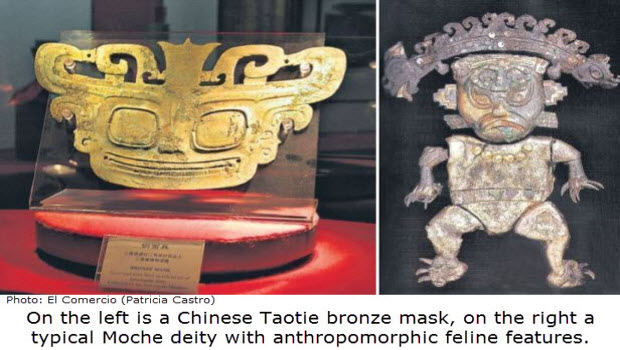
Ancient Link Between Chinese And Peruvian Civilizations?
Peru’s leading newspaper El Comercio ran a story a few days ago about the possible link between the ancient Shang Dynasty of China (1600 BC – 1046 BC) and Peru’s ancient Chavin civilization, which emerged around 1000 BC.

“We have reached the point where it is necessary to do scientific studies. I propose to compare DNA from remains of the Shang dynasty with Chavin or later cultures,” Jigen told El Comercio. “We can send samples to laboratories in the U.S. or Canada. Only with these tests can we validate a shared past.”
Jigen bases his theory, in part, on legends about the collapse of the Shang Dynasty. It is said that the dynasty’s ruler, Prince Yin, left China and headed east with his army. He also points to similarities in iconography of Shang artifacts and those of the Chavin and the later Mochica, Nazca and Paracas cultures.
Surprisingly, Jigen is quoted saying there isn’t other hard evidence of intercontinental contact between ancient Chinese and South American societies.
Hasn’t he done the tour of the Larco Museum in Lima?
The Moche were among the most accomplished ceramic workers of the ancient world, meticulously documenting in highly realistic fired-clay sculptures and portraits their customs, religion, their people and their way of life.
Here are a couple of examples from the Larco Museum’s permanent collection that arguably support Jigen’s theory:
See our Pinterest page for more …
If you like this post, please remember to share on Facebook, Twitter or Google+
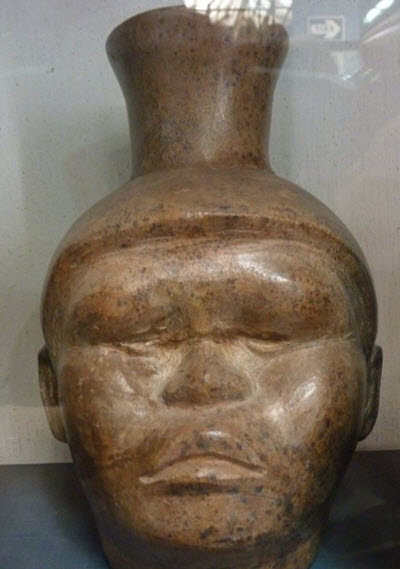
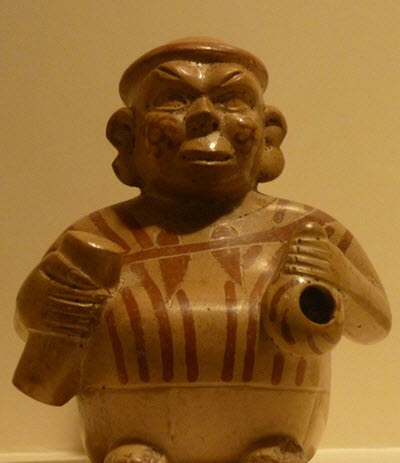

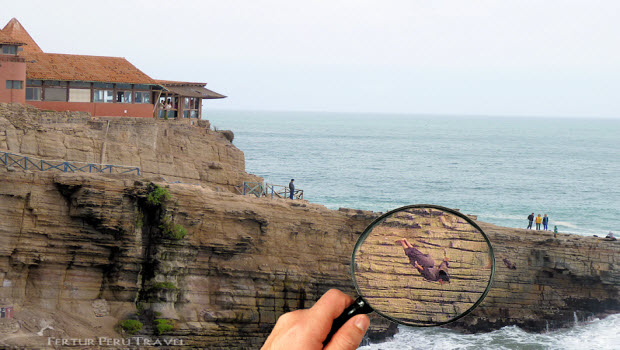 Lima’s legendary leaping monk saves drowning man
Lima’s legendary leaping monk saves drowning man 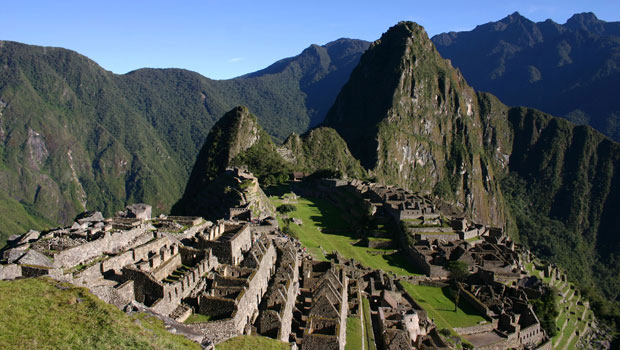 Inca sites ticket now ½ price to entice visitors back to Cusco while repairs to Machu Picchu routes continue
Inca sites ticket now ½ price to entice visitors back to Cusco while repairs to Machu Picchu routes continue  Visit us in our new office in Cusco!
Visit us in our new office in Cusco!  Soy Andina: Peruvian Dance & Identity
Soy Andina: Peruvian Dance & Identity  Peru’s INC says it will limit sale of Machu Picchu tickets when rail service resumes
Peru’s INC says it will limit sale of Machu Picchu tickets when rail service resumes 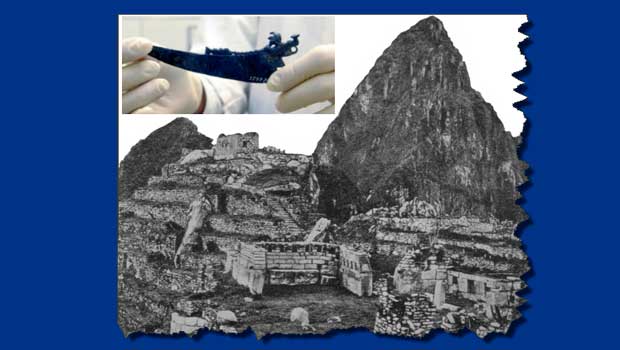 Yale and Cusco university sign deal for return of Machu Picchu artifacts
Yale and Cusco university sign deal for return of Machu Picchu artifacts  Consettur imposes 2013 rate hike for bus ride up to Machu Picchu
Consettur imposes 2013 rate hike for bus ride up to Machu Picchu  Court Rejects One Family’s Ownership Claim of Machu Picchu
Court Rejects One Family’s Ownership Claim of Machu Picchu
I think the Shang Dynasty collapse is too early. As the Tang Dynasty fell at around 900AD & a new culture came into Peru – from the sea – at the same time with almond shaped eyes -perhaps these were refugee Tang supporters. It would have made no sense for them to sail southwest, as this would invite pursuit & capture (especially if the vessel was not first class). Any pursuers may well have assumed this route because the Chinese had commercial links to Europe & Africa around the Cape at that time. Sailing east, may have been unexplored, would possibly have offered a best chance of escape.